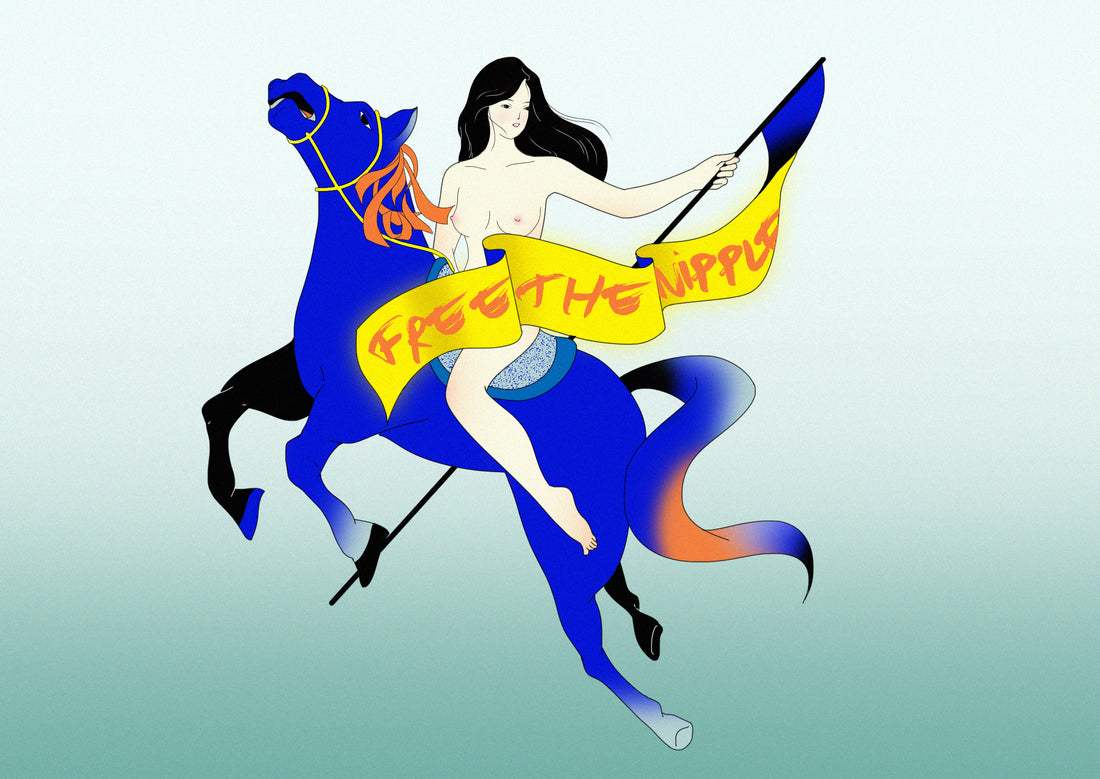
The History Behind "Free the Nipple"
Share
A battle as old as time, the Free the Nipple campaign emerged in 2012 to protest the censorship of the female nipple, arguing that if men are allowed to be shirtless in public, so should women.
The inherent inequality of how people can live publicly in their bodies stems from the age-old sexualization of the female body by men, who for so long have regarded the female form as an object for their consumption instead of their respect. The censorship of the female breast has landed topless protestors in jail for over 24 hours, despite toplessness not being a crime since public nudity laws apply to genitals, not mammary glands.
However, the public eye has regarded breasts in a sexualized manner for so long that even in 2021, it is still taboo for a woman’s bare breasts to be seen by anyone other than their current sexual partner or closest friends.
Public Film Release
The Free the Nipple campaign was christened by the 2014 theatrical release of Lina Esco’s Free the Nipple documentary on Netflix. It followed a group of young women in New York City publicly protesting the legal and cultural taboos surrounding female breasts. The documentary showcased their publicity stunts, art installations, and conversations with lawyers about the legality of female chest nudity. It was positively received, especially by celebrities such as Miley Cyrus, Chrissy Teigen, Jennifer Anniston, and Naomi Campbell. On Jimmy Kimmel Live, Miley Cyrus spoke about the campaign: "The nipple, what you can't show, is what everyone has. But the jug part that everybody doesn't, you're allowed to show underboob. I've never understood the way it works.”
Social Media
One of the more popular conversations about the suppression of the female nipple centered around the discriminatory censorship of it on social media platforms, as opposed to the passive acceptance of the male nipple on the same platforms. YouTube took down videos, Instagram blocked posts, and even Tumblr banned “female presenting nipples” as late as 2018, prompting the #FreetheNipple movement on social media platforms to express opposition to sexist practices and move towards de-stigmatizing the body part. These sites explain that their decision to censor the nipple is because of the audience they are targeting (12+) and that including nudity would force them to limit their user base to adults only, thereby isolating millions from their platform.
However, that is only because they are choosing to view the nipple as nudity, as explicit, as indecent. If, say, they looked at it with the same blasé indifference with which they view the male nipple, this wouldn’t even be a conversation. The ratings and regulations on the female nipple and institutions’ explanation that they are trying to appeal to a large demographic’s comforts and boundaries further enforce the sexualization of the female form instead of actively destigmatizing it through acceptance.
But this is not surprising. These companies are in the business of making money, not sweeping social change. Being a trendsetter at the forefront of a controversial cause would make them ripe targets for backlash and lose customers and, subsequently, money.
The fetishization of the female breast is a longstanding practice that won’t see change overnight, but with steady incorporation into the mainstream, there is a chance that our next generations will be soaking up the sun in parks around the world with their chests out, and tan lines will be a thing of the past.

